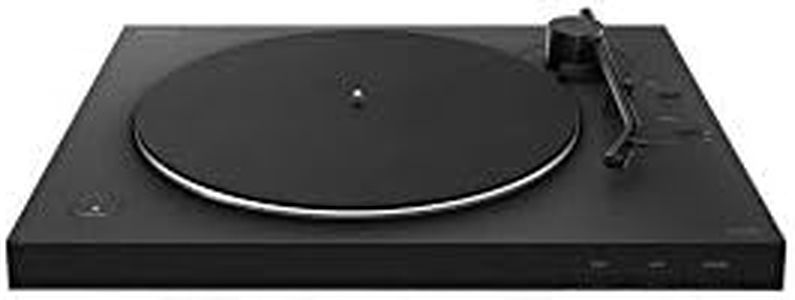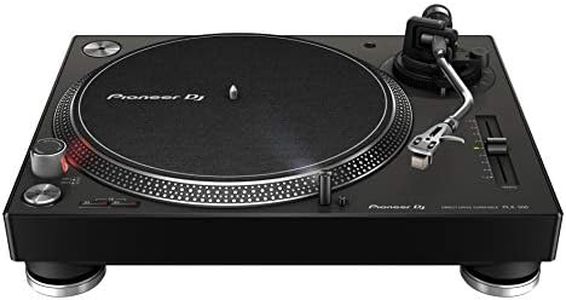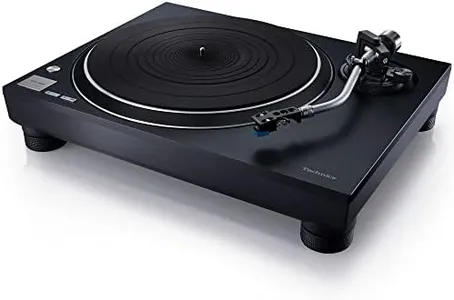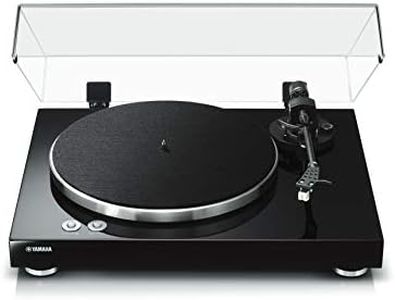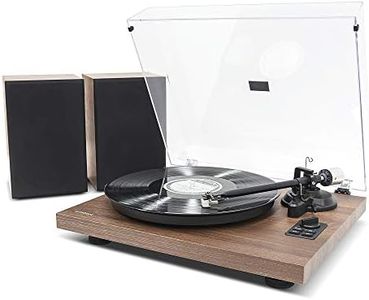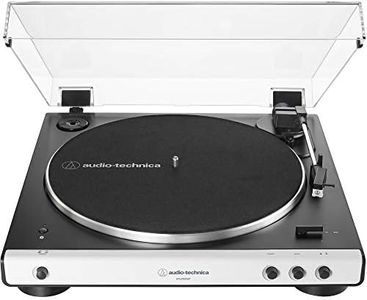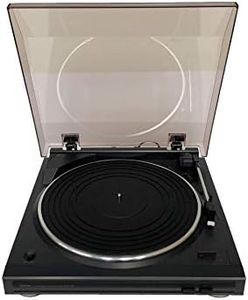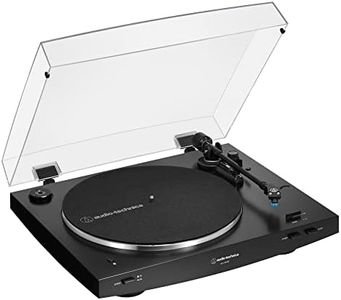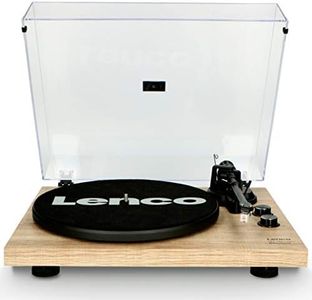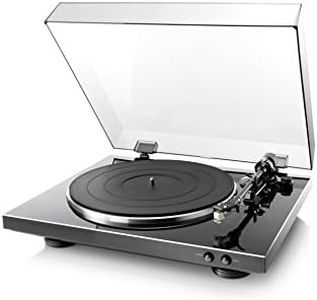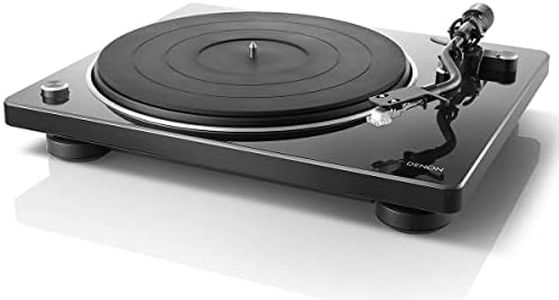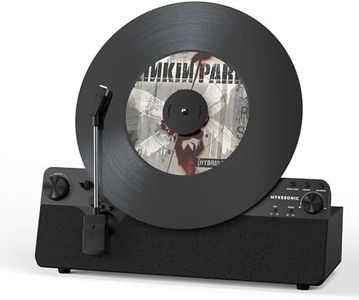We Use CookiesWe use cookies to enhance the security, performance,
functionality and for analytical and promotional activities. By continuing to browse this site you
are agreeing to our privacy policy
10 Best Automatic Turntables
From leading brands and best sellers available on the web.#1
Winner
#5
mbeat
11%OFF
MB-PT-28 Bluetooth Hi-Fi Vinyl Turntable Record Player with 36W Bookshelf Speakers, Supports 33/45 RPM Vinyl Record, Bluetooth Streaming via Smart Devices, Pre-installed Hi Fidelity MMC Stylus, Solid Metal Platter, Removable Dust Cover and Adjustable Counterweight and Anti-skating weight, Including Feature-Rich Audio Outputs, Line-in Pre-amplifier, USB Recording Function
Buying Guide for the Best Automatic Turntables
Choosing the right automatic turntable can make a big difference in your listening experience, whether you’re a seasoned vinyl enthusiast or just starting out. Automatic turntables are designed to make playing records easy—you simply press a button and the tonearm moves into place by itself, without needing manual intervention. This is helpful for people who want convenience and an easy start. When picking a turntable, it’s important to understand the main features and how these can fit your needs and preferences.Drive TypeThe drive type is the mechanism used to spin the platter on which your record sits, typically either belt-drive or direct-drive. Belt-drive turntables use an elastic belt to connect the motor to the platter, resulting in quieter operation and often reducing vibrations, which is great for casual listeners and audiophiles alike. Direct-drive turntables, on the other hand, have the motor directly under the platter, providing quicker start-up and more consistent speeds, which can appeal to those wanting faster response times or who may use their turntable for DJing. When considering drive type, think about whether you prioritize quieter listening or a sturdier, more responsive mechanism.
Automatic FeaturesAutomatic turntables can vary in how much is actually automated. Full-automatic models put the tonearm onto the record and lift it off at the end, while semi-automatic ones only lift the tonearm at the end of a record. Manual models require you to do these steps yourself. If you value convenience and want to protect your records from accidental scratches, a fully automatic option is ideal. Those who like to be more hands-on or enjoy the ritual of playing vinyl might prefer a semi-automatic design.
Cartridge and Stylus TypeThe cartridge and stylus are the parts that actually touch your records and read the music. Some turntables come with a fixed cartridge, which can make setup simple, while others offer user-replaceable cartridges, allowing you to upgrade for better sound in the future. Stylus shapes and quality also matter: beginners may be fine with a basic, durable stylus, but those chasing premium sound might want to look for the ability to upgrade. Consider if you want an option that lets you swap out the cartridge or if an all-in-one, ready-to-play solution suits your needs better.
Built-in PreampVinyl records produce a very quiet sound signal that needs to be amplified before it reaches your speakers. Some turntables have a built-in preamp, which means you can connect directly to powered speakers or amplifiers without needing an extra box. If you already have an amplifier with a dedicated ‘phono’ input, a built-in preamp may not be as important. For those unsure or wanting a simpler setup, having a built-in preamp adds flexibility and ease-of-use.
Playback SpeedsTurntables can support different playback speeds, mainly 33 1/3 RPM (for most LPs) and 45 RPM (for singles), while some also handle 78 RPM (for very old records). Make sure the turntable can play the type of records you own or expect to buy. If your collection includes only modern LPs and 7-inch singles, 33 and 45 RPM support is enough. If you plan on exploring vintage records, look for 78 RPM compatibility.
Build Quality and IsolationBuild quality impacts how well a turntable can avoid unwanted vibrations and noise. Heavier materials and rubberized feet help isolate the turntable from environmental vibrations (like footsteps). If you'll use the turntable in an area with a lot of movement or on a flexible surface, prioritize good isolation features. For quieter, carpeted rooms or dedicated furniture, these features can be less of a priority.
Connectivity OptionsTurntables now often have various output options, such as traditional RCA cables, USB connectivity for digitizing records, or even wireless Bluetooth. Consider how you want to connect the turntable to your speakers or receivers. If you plan to archive your vinyl collection, look for USB connections. For basic listening, standard analog output is sufficient, while Bluetooth is best for those who want to avoid extra cables and use wireless speakers.
